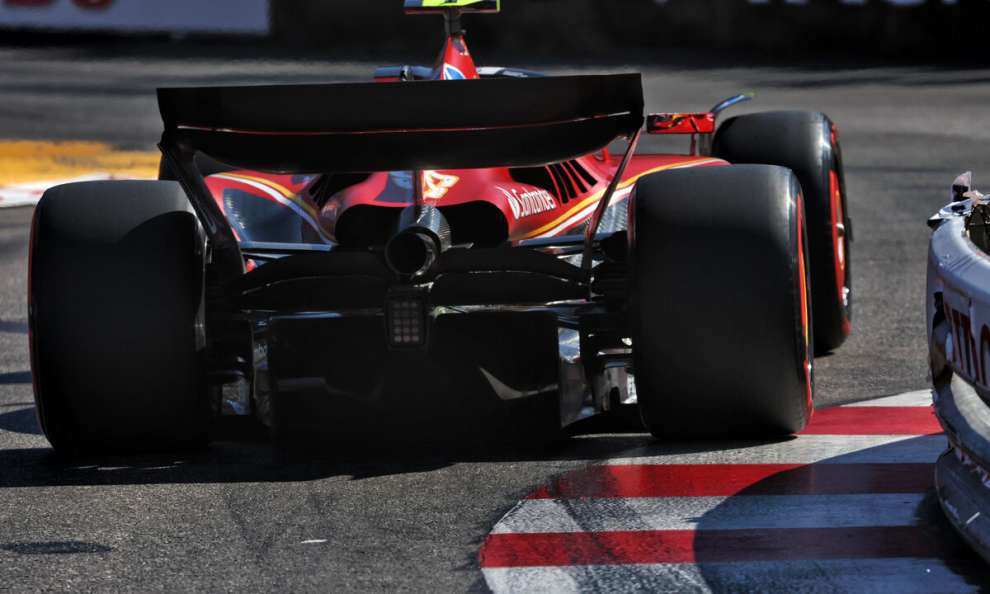By Carlo Platella
Charles Leclerc’s victory in Monte Carlo highlighted one of the many advantages of the SF-24. At low speeds the Red appears as it isand the car that best manages to digest curbs and the roughness of the asphalt, with a naturalness envied by Red Bull and McLaren. The choices made by Ferrari on the 2024 car, initially accompanied by skepticism at the time of presentation, thus acquire new meaning.
The difficulties of McLaren and Red Bull
To date, the RB20 remains in all likelihood the best car of the lot, but the last two races in Italy and Monaco have highlighted some of its shortcomings. In the Principality, Red Bull paid for its poor agility on curbs and dips, with a reduced ability to absorb bumps. “In the second sector we were in a bad situation, we couldn’t touch the curbs which immediately fell apart and we lost a lot of time”, Verstappen’s story. “We tried to soften and stiffen, but the car was like a go-kartit jumped a lot, it didn’t absorb any curbs, bumps or changes in slope.”
A similar dynamic had also emerged the previous week in Imola, but with a difference. In Verstappen’s hands the RB20 aggressively attacked the curbs of the fast Tamburello chicane, so much so that it aroused the envy of Charles Leclerc, but then broke down in the slower sections such as the Variante Alta. The impression is that after a leap the Red Bull is able to stabilize in the presence of a large vertical thrust, be it the weight of fuel at a full tank or the downforce at high speeds. A small confirmation comes from the better pace that Verstappen manages to express in the initial stages of the race.
In Monte Carlo, however, McLaren also ran into a similar problem. “We don’t seem to be able to achieve the same behavior over bumps and curbs as other cars,” says Andrea Stella. “Our drivers were clear that other cars can attack more easily the curbs and on a track like this it makes quite the difference”. Words, those of the Team Principal, which betray an indirect reference to Ferrari.
The Ferrari choice
The victory of the Cavallino in the Principality was in some ways unexpected, considering how the slow corners remain a weak point of the SF-24 compared to its direct competition. However, the Red showed off an enviable stability on the curbs and on the city asphalt of Monte Carlo, also the result of the philosophy of the suspension group. In particular, the design of suspensions is a question of compromise between three aspects: overall dimensions and impact on local flows; stabilization of the heights from the ground and the posture of the car; kinematics and mechanical grip
On the occasion of the presentation of the SF-24, technical director Enrico Cardile underlined this aspect, highlighting how much Ferrari had taken into consideration the compliance of the suspension, i.e. its movements and digestion of roughness: “For what our goals and flow management are, we have found a good compromise with the current suspension layout. When I talk about compromises, I’m referring to aerodynamic performance and compliance with the suspension”.

Emblematic is the Cavallino’s unconventional choice to focus on a newly developed pull-rod rear suspension compared to the push-rod of the competition, which is instead more favorable to the circulation of flows in the gear shift area. It is not a question of recognizing the superiority of one scheme over the other, but the different choice is an indication of how different the upstream objectives were also. “By switching from the pull-rod to the push-rod we did not find any advantages that could be justified the compromise in terms of weight and compliance”commented Cardile. The picture is that of a Ferrari which in its design compromise has taken the mechanical behavior of the rear axle into great consideration, as Andrea De Zordo, technical director of customer Haas, confirmed a few months ago to Racecar Engineering: “The way he works mechanically, takes more into account the behavior of the suspension”.
Internal revolution
The merits of the Maranello suspension group, however, do not stop here. In fact, current Formula 1 cars are based on ground effect, exploiting the aerodynamic interaction between the surface and the ground to release load. To make the most of this interaction, it becomes a priority to perfectly control the height from the ground while driving, where even a single millimeter can make the difference. Something that Adrian Newey was perfectly aware of, so much so that he dedicated himself above all to suspensions during his last years at Red Bull.

In the last two years the world champions have beenthe best at stabilizing ground clearances while driving, also managing to collapse the rear at high speeds to induce a partial stall of the diffuser, gaining speed in a straight line. According to what Michael Schmidt reports on the pages of Auto Motor und Sport, however, in 2023 the competition has gained similar mastery, including Mercedes, Ferrari and the customer Racing Bulls, which now features the updated Red Bull mechanics.
Schmidt also reports that to date Ferrari would have even better ride height control than the original Red Bull. This is partly due to the new internal mechanics, with the transition from cup springs to heavier torsion bars, invaluable for achieving greater precision in heights from the ground. Once again, Cardile’s words from last February become a small confirmation: “The rear suspension mechanics are located differently inside the transmission case. It’s a new concept, for us it’s an innovation, because it’s a different way of managing the suspension compared to what was done in the past.” Advantages, those of the Ferrari mechanics, which will come in handy in Montreal, where the absorption of bumps and curbs will once again be a central theme.
#Ferrari #suspensions #philosophy #bears #fruit #analysis